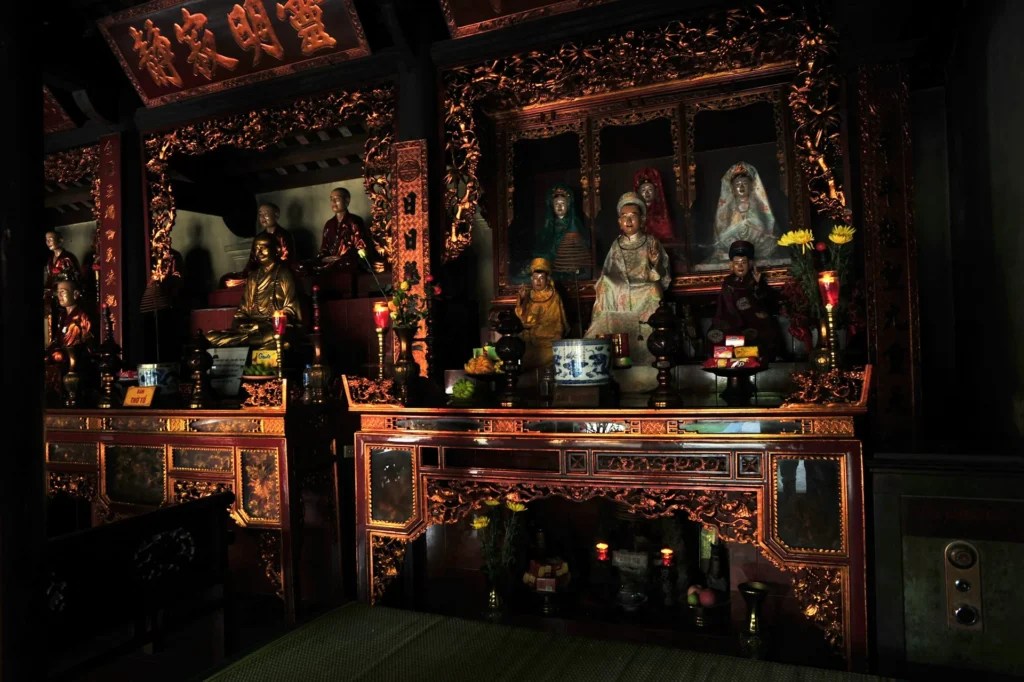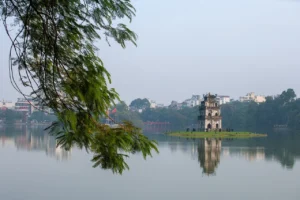Hanoi, the vibrant capital of Vietnam, offers a unique blend of ancient traditions and modern life. One of the most captivating aspects of the city is its rich cultural heritage, particularly the breathtaking temples scattered throughout the city. These temples not only serve as spiritual sanctuaries but also showcase the architectural prowess of ancient Vietnamese civilizations. Here, we explore the top 10 must-see temples in Hanoi, each with its unique history and beauty.
1. Temple of Literature (Văn Miếu Quốc Tử Giám)
The Temple of Literature is perhaps one of the most famous temples in Hanoi. Founded in 1070, it was initially dedicated to Confucius and became Vietnam’s first national university. This temple is a tribute to education, intellectualism, and the enduring Confucian values that have influenced Vietnamese society. The stunning courtyards, well-preserved pavilions, and ancient stone steles make it a historical treasure.
Visitors can marvel at the Five Courtyards, each representing different stages of Confucian learning. The temple grounds also include a picturesque lotus pond and towering banyan trees, which provide a peaceful oasis amidst the bustling city.
2. One Pillar Pagoda (Chùa Một Cột)
One of the most iconic architectural landmarks in Hanoi, the One Pillar Pagoda is a must-see for both tourists and locals alike. Built in 1049 by Emperor Lý Thái Tông, the pagoda stands on a single stone pillar, symbolizing the blossoming lotus flower, which is associated with purity in Buddhist philosophy.
Legend has it that the emperor constructed this pagoda in gratitude to the Goddess of Mercy after he dreamt of her handing him a male child while seated on a lotus flower. Visitors to this unique temple can admire its elegant design and reflect on its rich spiritual symbolism.
3. Tran Quoc Pagoda (Chùa Trấn Quốc)

Nestled on a small island in the West Lake, Tran Quoc Pagoda is the oldest Buddhist temple in Hanoi, dating back to the 6th century during the reign of Emperor Lý Nam Đế. Over the centuries, this pagoda has been a significant spiritual destination for Vietnamese Buddhists.
Its distinct architecture, including the 11-story stupa, is a striking sight. Visitors will also find several ancient statues and intricate carvings, adding to the historical significance of the site. The tranquil location on the lake makes it a peaceful retreat from the city’s hustle.
4. Quan Thanh Temple (Đền Quán Thánh)
The Quan Thanh Temple, located near the West Lake, is dedicated to Tran Vu, one of the principal deities in Taoism. The temple, which dates back to the 11th century, features a large bronze statue of Tran Vu, measuring nearly 4 meters tall and weighing over 3,000 kilograms.
This temple is a great example of traditional Vietnamese craftsmanship and religious devotion. Visitors can explore its intricate wood carvings and ancient altars, which reflect the deep spiritual traditions that have been part of Hanoi’s culture for centuries.
5. Ngoc Son Temple (Đền Ngọc Sơn)
Situated on an islet in the middle of Hoan Kiem Lake, Ngoc Son Temple is one of Hanoi’s most picturesque religious sites. The temple is dedicated to General Tran Hung Dao, a national hero who repelled the Mongol invasions in the 13th century.
Accessed by the Huc Bridge, a bright red wooden bridge, the temple offers stunning views of Hoan Kiem Lake and the surrounding parklands. Visitors can also learn about Vietnam’s rich history while exploring the temple’s peaceful atmosphere.
6. Bach Ma Temple (Đền Bạch Mã)
Considered one of Hanoi’s oldest temples, Bach Ma Temple is located in the heart of the Old Quarter. This temple was built during the reign of Emperor Ly Thai To in the 11th century and is dedicated to the White Horse, which is said to have led the emperor to the ideal location for his new capital.
The temple is a blend of traditional Vietnamese architecture and spiritual devotion. Its vibrant altars and ancient relics make it a must-visit for those interested in Hanoi’s history and culture.
7. Phu Tay Ho (Phủ Tây Hồ)
Phu Tay Ho is a temple complex located on the peninsula of West Lake. It is dedicated to the Mother Goddess, a key figure in Vietnamese spiritual belief. Unlike most of the other temples in Hanoi, Phu Tay Ho has a festive atmosphere, especially during the lunar new year when people come to offer prayers for prosperity and good fortune.
The temple’s beautiful setting, along with its significant cultural importance, makes it a popular destination for both spiritual pilgrims and curious tourists.
8. Thay Pagoda (Chùa Thầy)
Situated on the outskirts of Hanoi, about 30 kilometers from the city center, Thay Pagoda is one of the most unique temples in the region. It is dedicated to Tu Dao Hanh, a monk who is revered as a saint and the founder of traditional Vietnamese water puppetry.
Surrounded by lush greenery and scenic mountains, Thay Pagoda offers an immersive experience in both spiritual and natural beauty. Visitors can also explore caves and scenic walking paths around the temple.
9. Kim Lien Pagoda (Chùa Kim Liên)
Nestled on the eastern bank of the West Lake, Kim Lien Pagoda is an architectural masterpiece dating back to the 13th century. The pagoda is named after the village of Kim Lien and is one of the most well-preserved temples in Hanoi.
The pagoda is known for its delicate wooden carvings and the serene atmosphere it provides. Its design is distinctly Vietnamese, with a series of ornate gates and traditional roof structures that transport visitors back in time.
10. Huong Pagoda (Chùa Hương)
Located about 60 kilometers southwest of Hanoi, Huong Pagoda is a sprawling complex of Buddhist temples and shrines set amidst a backdrop of limestone mountains and lush forests. It is one of the most significant pilgrimage sites in Vietnam, especially during the Huong Festival, which takes place in the first few months of the lunar year.
To reach the main pagoda, visitors take a boat trip along the Yen River, followed by a trek through beautiful landscapes. The journey to the Huong Tich Cave, where the main temple is located, is a spiritual adventure in itself.
These ten temples offer a glimpse into Hanoi’s spiritual heart and cultural legacy. Each temple tells its own story, from ancient Buddhist traditions to the resilience and strength of the Vietnamese people. Exploring these sites provides not just a spiritual journey but also a deeper understanding of Vietnam’s complex and rich history.



